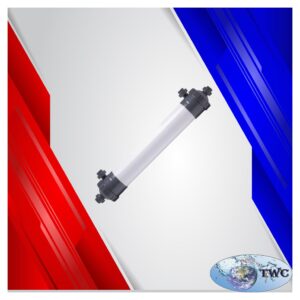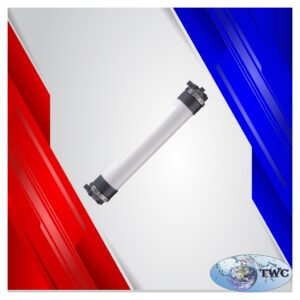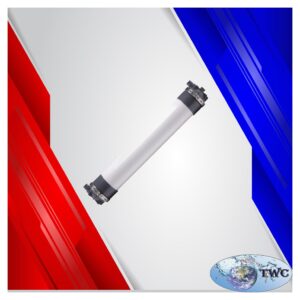Membranes use in our Ultra Filtration Systems.
In spiral wound membranes, ultrafiltration is performed using crossflow separation, much like reverse osmosis and nanofiltration. Where a feed stream is introduced into the membrane element under pressure and passed over the membrane surface in a controlled flow path. A portion of the feed passes through the membrane and is called permeate. The rejected materials are flushed away in a stream called the concentrate. This arrangement allows high membrane surface area in a small footprint but is more subject to fouling since it cannot be back washed.
Another common arrangement is use of hollow fiber membranes. The membrane is formed into long. Very thin tubes or fibers (typically 0.6 to 2 mm in diameter) which are sealed into connectors at both ends. Hundreds of these fibers with one inlet and outlet connector are called a “bundle” or “cartridge”. Afterwards this will be grouped together to form a “module”. Basically the feed solution typically flows through one end of the fibers. While the opposite end is completely or partially closed off. Thus forcing the fluid through the membrane where it is collected in the cartridge area surrounding the fibers. Leaving the suspended materials on the inside of the membrane.
Membrane cleaning may be achieved by allowing a very small portion of the flow to exit the opposite end of the membrane while the membrane is “on-line”, followed by a cleaning step in which clean water or water with a cleaner is caused to flow “backward” in the membrane (i.e., from outside the membrane to the inside).
Showing all 4 results



